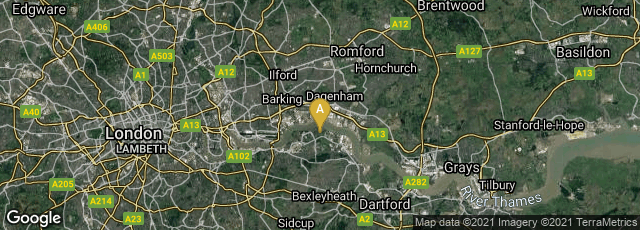The modern type face used on the text in the page on the right seems inappropriate to the elaborate medieval style border surrounding it.


A: London, England, United Kingdom
Technology could be applied to speed up manufacturing and reduce the cost of books, or to produce luxury volumes. Between 1861 and 1862 English architect, designer, and chromolithographer Owen Jones issued in parts or fascicules a high luxury publication entitled the Victoria Psalter, a folio-size illuminated edition of the psalms, in the medieval manuscript style chromoithographed in gold, three shades of red, three shades of blue, and black on 53 leaves of thick paper. It was dedicated to Queen Elizabeth.
As spectacular and elaborate as the chromolithography was, the calf binding finished in high relief in the Leighton studio was probably the most dramatic aspect of this work. Remnant & Edmonds probably produced the covers moulded in relief and embossed on calfskin after Frederick Leake’s patented process, a method of moulding designs in relief in leather over papier maché that could be applied to such things as wall hangings as well as books. This style of binding called "relievo" was done in England between 1846 and about 1862 on a small number of deluxe volumes. The "Relievo Leather" process patented by Frederick Leake was first applied in bookbindings in the edition of Gray's Elogy issued by Owen Jones and published in London by Longman and New York by Wiley & Putnam in 1846. Relievo bindings were intended to emulate the elaborate jeweled bindings of the Middle Ages. To create them the Remnant & Edmonds bindery employed a very large and powerful fly embossing press. The Remnant & Edmonds bindery won a prize medal for this type of binding at the Great Exhibition of 1851. It is most likely that in this instance the Remnant & Edmonds bindery undertook the production of this relievo binding for Leightons since they are the only bindery in England known to have operated their unusually massive and powerful fly embossing press.